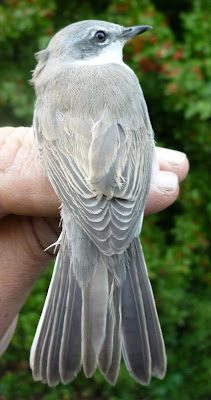 The film 'March of the Penguins' showed the amazing journey undertaken by Emperor Penguins as they walk to their breeding grounds in the Antarctic. I admit that Swallows are quite different from Penguins - not least the fact that they can fly, but they are black(ish) and white(ish) and they both face many dangers as they try to find a way of surviving in a harsh world. The halcyon days of summer are over, our summer visitors are faced with tough choices about how long to remain in the UK before setting of on the long route south to Africa. If they leave it too late before beginning their migration, there is increased risk of bad weather while food supplies may become more limited.
The film 'March of the Penguins' showed the amazing journey undertaken by Emperor Penguins as they walk to their breeding grounds in the Antarctic. I admit that Swallows are quite different from Penguins - not least the fact that they can fly, but they are black(ish) and white(ish) and they both face many dangers as they try to find a way of surviving in a harsh world. The halcyon days of summer are over, our summer visitors are faced with tough choices about how long to remain in the UK before setting of on the long route south to Africa. If they leave it too late before beginning their migration, there is increased risk of bad weather while food supplies may become more limited. At Marston Vale Millennium Country Park there are still good numbers of Swallows, Sand Martins and House Martins feeding over the lakes and reed beds. The reed beds also still hold some Reed Warblers and Sedge Warblers.
Last night Mike and I had another session attempting to ring Swallows as they went in to roost. The weather forecast wasn't promising but it was a really pleasant evening (though a touch cool) with a great sunset.
Totals ringed were:
- 2 Reed Warbler
- 2 Sedge Warbler
- 5 Sand Martin (including 2 adults)
- 11 Swallow(all juveniles)
Total 20
A group of 10-12 Yellow Wagtails also roosted in the reed beds overnight.
The Sedge and Reed Warblers seem to have a different migration strategy. The Sedge Warblers are getting very heavy, as they are building up fat reserves to give them the energy for lengthy flights. The Reed Warblers haven't put on much extra weight, so the assumption is that they will make shorter 'hops' in their southward migration.











